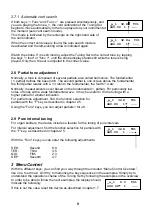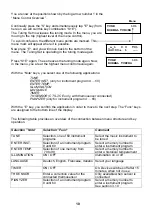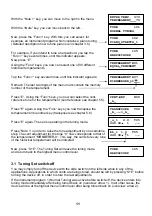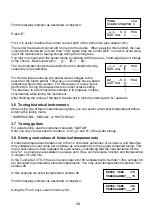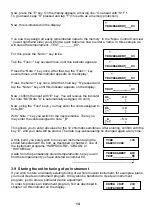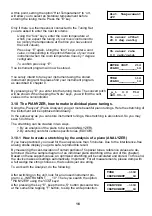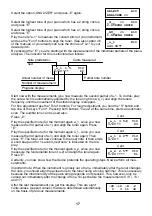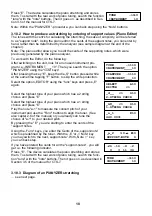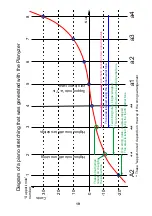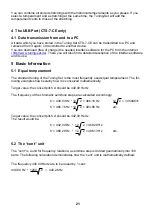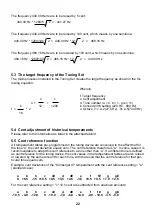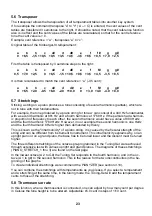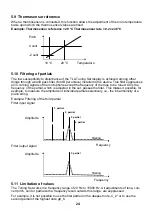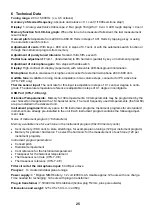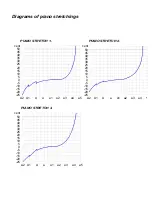
23
5.6 Transposer
The transposer allows the transposition of all temperament tables into another key system.
If for example the command transpose “a” to "c" ( A --> C) is entered, the cent values of the cent
tables are transferred 3 semitones to the right. It should be noted, that the cent reference function
also is in effect and the cent values of the tables are recalculated, so that for the cent reference
tone the cent value is = 0.
Example: cent reference = “a” , transposes “a” to “c”:
Original table of the Kirnberger-III temperament:
a b h c c# d d# e f f# g g#
0 +6,5 -1,5 +10,5 +0,5 +3,5 +4,5 -3,5 +8,5 +0,5 +7,0 +2,5
First the table is transposed by 3 semitone steps to the right:
a
b
h
c c#
d d#
e
f
f#
g g#
0,5 +7,0 +2,5
0 +6,5 -1,5 +10,5 +0,5 +3,5 +4,5 -3,5 +8,5
It is then recalculated to match the cent reference = “a” (-0,5 cent):
a
b
h
c c#
d d#
e
f
f#
g g#
0 +6,5 +2,0 -0,5 +6,0 -2,0 +10,0
0 +3,0 +4,0 -4,0 +8,0
5.7 Stretchings
Striking a string on a piano produces a tone consisting of several harmonics (partials), which are
not in tune with their fundamentals.
For example, the tone produced by a piano string for tone a' can consist of a 440 Hz fundamental,
with a second harmonic at 881 Hz and a fourth harmonic at 1768 Hz. If the partials had a harmon-
ic proportion of frequency to each other, the second harmonic would have a value of 880 Hertz
and the fourth harmonic 1760 Hertz. However, in our example the second harmonic is one Hertz
and the fourth harmonic 8 Hertz higher than demanded by theory.
This is known as the "inharmonicity" of a piano string. It is caused by the flexural strength of the
string and can be different from instrument to instrument. This inharmonicity explains why, on an
upright piano or on a grand piano, the bass has to be tuned lower and the discant must be tuned
higher.
The three different stretchings of the octaves pre-programmed in the Tuning Set were achieved
through extensive test with various upright and grand pianos. The diagrams of these stretchings
(PIANO_STRETCH_1 thru 3) are found on the last page.
In the lowest octave (A 2 to G#) the Tuning Set responds to the fourth harmonic, and in the oc-
tave (A 1 to g#) to the second harmonic. This is the reason for the two discontinuities in the be-
ginning of the graphs.
To create individual stretchings we recommend the PIANYZER (see section 3.10).
You can combine the stretchings with temperaments as you please. If you select a temperament
and a stretching at the same time, in the tuning mode, the Tuning-Set will add the temperament
cents to those of the stretching.
5.8 Thermosensor rate
In this function, when a thermosensor is connected, one can adjust by how many cent per degree
in Celsius the tone height is to be altered. Adjustable: ±5.0 cent in steps of 1/10 cent.
Summary of Contents for TUNING SET CTS-7-C
Page 2: ......
Page 36: ...www tuning set de...

